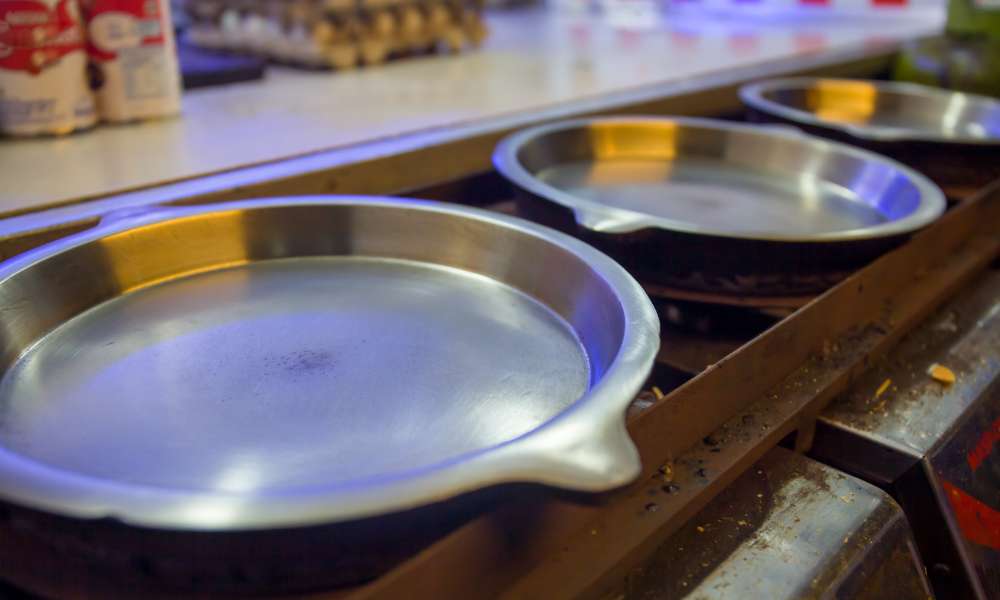Baking a cake is as much about precision as it is about creativity, and choosing the right pan is a crucial first step. If you’ve ever wondered what size is a standard cake pan, you’re not alone. The size of your cake pan can significantly impact the outcome of your recipe, from ensuring even baking to achieving the perfect rise. In this post, we’ll explore the dimensions of a standard cake pan, why they matter, and how to select the best one for your baking needs. Let’s take the guesswork out of your next sweet creation.
Understanding Cake Pan Sizes
standard cake pot often refers to an 8-inch or 9-inch round pot. These dimensions have become a benchmark in baking, thanks to their versatility. A Size Is A Standard Cake Pan accommodates most recipes, ensuring the patty is baked evenly without undercooking or overcooking. Beyond these common sizes, pots vary dramatically in width, depth, and shape, each affecting how your patty turns out.
Choosing The Right Pan For The Right Cake
Not every cake suits the same pan. A layered sponge cake demands a round pot for its classic look, while brownies or sheet patty shine in rectangular pots. Bundt pots, with their intricate designs, transform simple batters into visual masterpieces. Selecting the right pot not only enhances aesthetics but also ensures your patty texture and density meet expectations.
Depth Matters Exploring Pan Depth Options
The depth of a pot directly impacts how the batter cooks. Shallow pots allow for quicker cooking and thinner layers, while deeper pots are perfect for dense, moist patty. Adjusting bake times for varying depths is crucial, as deeper pots require a gentler, longer bake to ensure the center sets without burning the edges.
Volume Capacity Of A Standard Cake Pan
Understanding volume capacity prevents the batter from spilling over or falling flat. A standard 8-inch round pot holds about 6 cups of batter, while a 9-inch one accommodates approximately 8 cups. Measuring your pot’s volume is as simple as filling it with water and pouring the water into a measuring cup.
Common Materials For Cake Pans
Cake pans come in a variety of materials, each with distinct properties:
- Aluminum: Lightweight, excellent heat conductor, and rust-resistant.
- Nonstick Coatings: Allow easy release but require gentle handling to avoid scratches.
- Glass and Ceramic: Retain heat well but require careful handling to prevent uneven baking.
How Pan Size Affects Baking Results
A pot that’s too small can cause batter to overflow, while one that’s too large may lead to a dry, overbaked dessert. Pot size also influences baking time, with larger pots requiring less time for the batter to cook evenly. Sticking to the recommended size ensures your patty rises to perfection.
Adjusting Recipes For Non-Standard Cake Pans
Not all recipes are tailored for the pots you have on hand. Scaling recipes involves calculating volume differences, adjusting ingredient ratios, and modifying bake times. A reliable rule of thumb is to fill your pot no more than two-thirds full to prevent overflow.
Caring For Your Cake Pans
Proper care extends the life of your pans:
- Cleaning: Hand wash with mild soap to avoid damage to coatings.
- Storage: Nest pans carefully or hang them to maintain their shape.
- Preventing Rust: Ensure pans are completely dry before storing.
When To Replace Your Cake Pan
Even the sturdiest pots degrade over time. Warping, scratches, or flaking nonstick surfaces signal it’s time for a replacement. Using worn-out pots can lead to uneven bakes and sticking issues, compromising your creations.
Standard Cake Pan Substitutes
When a recipe calls for a pot you don’t have, creativity saves the day. Use a similarly sized pot and adjust bake times as needed. For example, a square pot can often replace a round one, though slight changes in baking dynamics may occur.
Popular Brands Offering Standard Cake Pans
Investing in quality pots pays off. Reputable brands like Wilton, Nordic Ware, and USA pot offer durable options for beginners and professionals alike. These brands focus on even heat distribution, nonstick coatings, and ease of use.
Common Mistakes with Cake Pans
- Overfilling: This leads to batter overflow and uneven baking.
- Improper Greasing: Results in sticking and ruined presentations.
- Ignoring Material Differences: Alters heat conduction and baking times.
Tips For Preparing Cake Pans
- Grease pans with butter or cooking spray to prevent sticking.
- Line the bottom with parchment paper for easy release.
- Dust with flour after greasing for an extra nonstick layer.
FAQs About Standard Cake Pan Sizes
What size is considered standard?
Ans: An 8-inch or 9-inch round pot is commonly accepted as standard.
Can I use a non-standard pan for standard recipes?
Ans: Yes, but you’ll need to adjust baking times and quantities.
What happens if I fill the pan too much?
Ans: Overfilled pans cause the batter to spill over and bake unevenly.
Conclusion
Choosing the right cake pan size is a fundamental step in baking success. From understanding dimensions to adjusting recipes and caring for your tools, mastering the art of patty pots elevates your skills. Armed with this knowledge, you’re ready to bake patty that impress, delight, and inspire.
